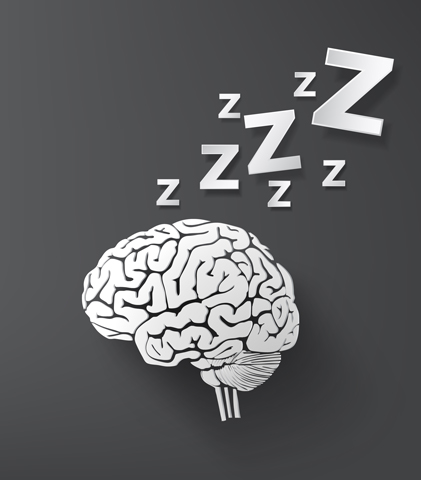The views expressed in our content reflect individual perspectives and do not represent the authoritative views of the Baha'i Faith.
Do you dream?
Yes, you certainly do, the sleep researchers all tell us. Whether you remember what you dreamed when you wake up or not, every human being dreams. Even newborn babies have dreams. We all go through periods of rapid eye movement (REM) sleep several times a night, when our most memorable dreams occur. However, sleep studies have recently found that we also dream during non-REM sleep, when brain activity is lower than in REM sleep. Half of all infant sleep occurs in the REM state, when pediatric neuroscientists believe babies’ brains first form the integrated pathways crucial to thought.
Dreaming proves universal, even going beyond the human species. We’ve probably all seen dogs and cats “run” in their dreams. Scientists have found that most mammals and even birds regularly dream. The average person, we now know, has between 3-5 dreams per sleep cycle, and sometimes more, for a total of approximately two hours of dreaming every night. Dreams can last a few seconds, or up to thirty minutes. Some people dream in black and white, others in vivid color. During a normal lifetime, the average adult will spend more than six years dreaming—almost ten percent of their total lifespan.
But so far, despite the universality of dreaming, science has very little knowledge about where our dreams actually originate. Theories abound—just one portion of the brain causes dreams, or multiple portions combine to create dreams, or the entire brain is utilized. No neuroscience researcher has determined which portion of the brain actually dreams. More importantly, no one knows why we dream, or what conceivable purpose dreams might have. The world of dreams, which has always been a mystery since the beginnings of history, continues to baffle us.
We do know this—no human being can live without sleeping and dreaming.
In fact, scientists have recently studied the increasingly proven linkage between sleep deprivation and mental illness, including bipolar disorder and various psychotic conditions. In one 2007 study done at Harvard Medical School and the University of California at Berkeley, researchers used Magnetic Resonance Imaging to scan the brains of sleep-deprived subjects, and found that the loss of sleep “causes the brain to become incapable of putting an emotional event into the proper perspective, and incapable of making a controlled, suitable response to an event.” Scientifically verified, the longest any person has ever stayed awake is eleven days, at the end of which the sleepless subject suffered from paranoia and hallucinations.
Sleep deprivation, and the loss of the ability to dream, actually mimics psychosis.
Another extensive dream study, conducted by Dr. Patrick McNamara at the Boston University School of Medicine, showed that many (but not all) dreams have “elaborate, complex, involuntary and highly-structured formal features” that combine to make up “extraordinarily complex mental simulations.” The researchers in that study learned that dreams often have their own internal logic and cohesiveness, rather than simply representing the random firing of neurons while the brain rests.
In other words, dreams can tell us the truth. Ancient societies know this wisdom, and as a result many native and aboriginal cultures place the dream world on an equal footing with the world of everyday consciousness, making little or no distinction between dreaming and waking states. In ancient times, dreaming may have given us our first human inclination of something beyond this material existence:
Dreams often seem to be experiences of a confused parallel world. Reflecting on this experience, we may speculate that during dreams we travel to a real, alternate realm. It has been suggested that one of the principle sources of this idea—a spiritual world distinct from the physical—is dreams. If this hypothesis is true, even partially, then dreams contribute to one of the basic notions of religion. – James R. Lewis, The Dream Encyclopedia, p. xiv.
The Baha’i teachings view dreams in a complex but essentially spiritual way—as the vehicle the human soul can and often does use to make its most profound discoveries:
When man’s soul is rarified and cleansed, spiritual links are established, and from these bonds sensations felt by the heart are produced. The human heart resembleth a mirror. When this is purified human hearts are attuned and reflect one another, and thus spiritual emotions are generated. This is like the world of dreams when man is detached from things which are tangible and experienceth those of the spirit. What amazing laws operate, and what remarkable discoveries are made! And it may even be that detailed communications are registered… – Abdu’l-Baha, Selections from the Writings of Abdu’l-Baha, p. 108.
This spiritual connection to our unconscious and to the world of the soul can benefit us enormously, if we only pay attention.
In my own quest to understand my post-war dreams, I learned that rehearsing my repeated nightmares might have a positive effect. Here’s how that works: before you go to sleep, you write down the recurring dream, making a short plot summary of what happens each time. Then you change the ending, writing down the way you’d like the dream to end. In my recurring PTSD war nightmare, I had to return to combat forever, so I wrote an alternate ending—that the war had ended, and that peace had come.
This technique didn’t stop or alter the nightmares immediately, but I think consciously changing the ending did eventually help, along with a few other techniques I learned along the way—more about those in the next installment in this series.
So please follow along as we examine the randomness of our dreams, and what each person can do to better understand what happens while they sleep.

















Comments
Sign in or create an account
Continue with Googleor